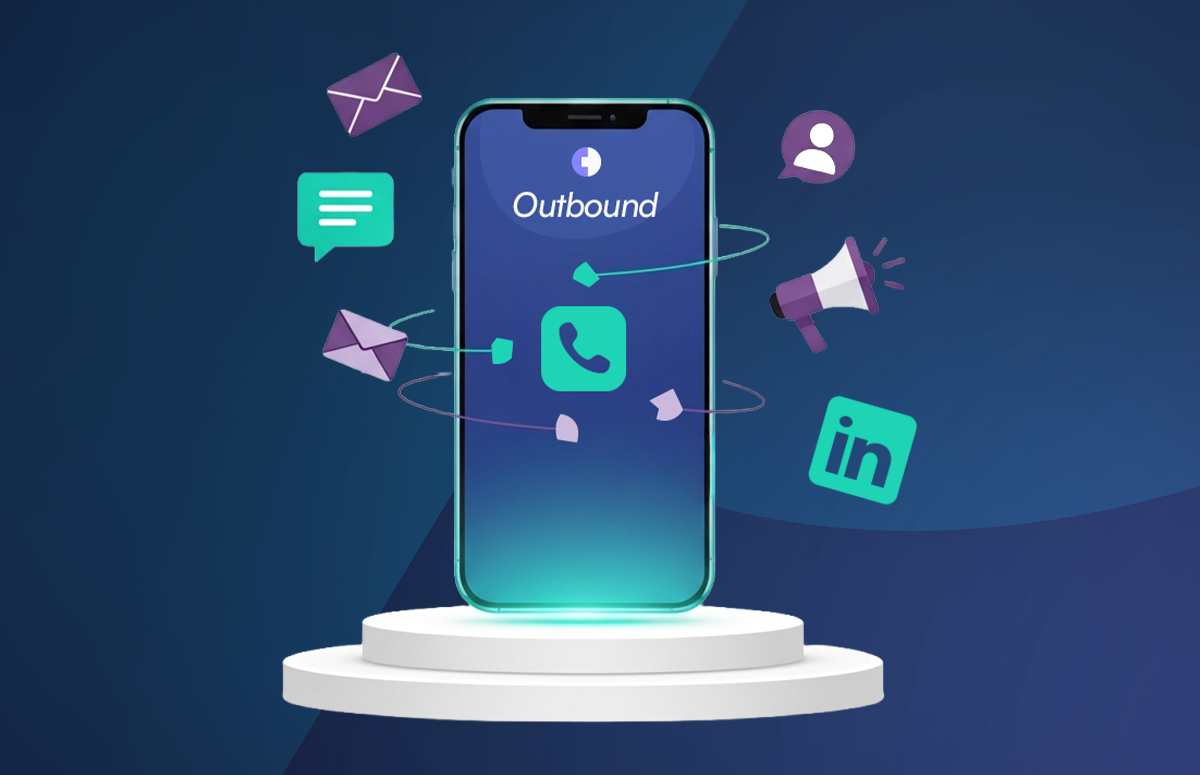MQL vs SQL: What They Mean and Why They Matter
MQL vs SQL: FAQs
In B2B sales and marketing, all leads aren’t created equal.
Some are just beginning to explore their options, while others are ready to have serious buying conversations. That’s where the distinction between MQLs (marketing qualified leads) and SQLs (sales qualified leads) comes in.
Understanding the difference is more than a matter of definitions - it’s the foundation of a smoother handoff between sales and marketing teams, stronger alignment between them, and ultimately, faster revenue growth.
In this guide, we’ll break down what makes an MQL different from an SQL, why the distinction matters, and how you can move leads from curiosity to conversion with confidence.
What is an MQL?
An MQL - or marketing qualified lead - is a prospect who has shown interest in your product or service but isn’t yet ready to buy.
They’ve engaged with your marketing content, such as downloading a guide, signing up for a webinar, or visiting key pages on your website, but haven’t taken high-intent actions like booking a demo.
In the MQL vs SQL framework, MQLs sit at the top or middle of the sales funnel. They require further lead nurturing through targeted content, email marketing campaigns, and remarketing before being passed to sales.
Common signs of an MQL include:
- Content downloads (eBooks, whitepapers).
- Subscribing to your newsletter.
- Attending marketing webinars or events.
- Website activity - visiting product or service pages multiple times.
By identifying and nurturing MQLs, you build a healthy pipeline of prospects who are more likely to convert into sales qualified leads (SQLs) when the time is right.
What is an SQL?
An SQL - or sales qualified lead - is a prospect who has shown strong buying intent and is ready for direct engagement with your sales team. They’ve moved beyond initial research and are actively considering your solution as a potential purchase.
In the MQL vs SQL framework, SQLs sit at the bottom of the sales funnel. They have the information, budget, and authority needed to make a decision, making them prime candidates for sales conversations.
Common signs of an SQL include:
- Sales call or product demo requests.
- Downloading detailed, high-intent content like case studies or pricing guides.
- Comparing your product to competitors.
- Engaging directly with a sales team rep.
By clearly defining SQL criteria - such as lead score thresholds, decision-making authority, and budget - your team can focus their efforts on the most promising opportunities, increasing close rates and reducing wasted time.
What is the difference between an MQL and an SQL?
The main difference between an MQL and an SQL is readiness to buy.
- MQLs are interested but still in the research or awareness stage. They’ve engaged with your marketing content, like downloading an eBook or attending a webinar, but aren’t yet in the buying stage.
- SQLs are ready for a sales conversation. They’ve demonstrated clear purchase intent, such as requesting a demo, comparing vendors, or engaging deeply with your sales team.
How do you turn marketing leads into sales leads?
In the MQL vs SQL framework, the transition happens when a lead meets agreed-upon criteria, often determined by lead scoring. This might include:
- Customer engagement levels (e.g., multiple visits to your pricing page).
- Fit with your ideal customer profile (ICP).
- Buying authority and budget.
Getting this distinction right is crucial for sales and marketing alignment.
If you pass MQLs to sales too early, reps waste time on unready prospects. If you hold back SQLs too long, you risk losing hot leads to competitors.
Why is the difference between an MQL and an SQL important?
Understanding the difference between an MQL and an SQL is essential for aligning sales and marketing, improving lead quality, and driving more revenue.
In the MQL vs SQL framework, each type of lead requires a different approach - mistaking one for the other can cost you time and deals.
Here’s why it matters:
1. Better sales and marketing alignment
Clear definitions help both teams agree on when a lead is ready to move from marketing to sales.
This prevents premature handoffs and ensures sales focuses on high-intent prospects.
2. More efficient lead nurturing
MQLs can be educated and nurtured with targeted content offers until they’re ready to buy, while SQLs can be fast-tracked into direct sales conversations.
3. Higher conversion rates
By sending the right leads to sales at the right time, you increase the chances of closing deals and shortening your sales cycle.
4. Improved customer experience
Prospects get relevant communication for their stage in the buyer’s journey - educational for MQLs, solution-focused for SQLs. This makes them more likely to engage and trust your brand.
How do you map MQLs and SQLs to the sales funnel?
In the MQL vs SQL framework, each lead type aligns with a different stage of the sales funnel, and mapping them correctly ensures your brand messaging is on point.
Here’s the detail 👇
MQLs = Top and middle of the funnel (Awareness and Interest)
MQLs are still learning about their problem and exploring potential solutions. They may have engaged with your content, signed up for your newsletter, or attended a webinar.
At this stage, your focus should be on education and relationship-building through blog articles, guides, videos, and email nurture campaigns.
SQLs = Bottom of the funnel (Decision and Action)
SQLs have moved into buying mode. They’ve shown high-intent signals, like requesting a demo, downloading pricing information, or directly contacting sales.
Here, your job is to help them through the decision-making stage with product comparisons, ROI calculators, case studies, and one-to-one sales calls.
Data points to watch when mapping
- Lead behaviour: Which pages they visit, how often, and in what sequence.
- Lead score: Points assigned for specific actions and demographic fit.
- Buying signals: Requests for quotes, trial sign-ups, or competitive evaluations.
When MQLs and SQLs are correctly mapped to the funnel, you can deliver the right message at the right time, speeding up lead conversions and keeping prospects engaged throughout their journey.
How do you transition a lead from an MQL to an SQL?
Moving a prospect from MQL to SQL is all about timing, engagement, and meeting the right criteria.
In the MQL vs SQL process, the transition happens when a lead shows strong buying intent and meets your sales-readiness benchmarks.
Here’s how to do it successfully:
1. Use a clear lead scoring system
Assign points for conversion actions like visiting the pricing page, downloading case studies, or engaging with sales emails.
Set a score threshold that indicates sales readiness.
2. Check fit with your Ideal Customer Profile (ICP)
Before passing the lead to sales, ensure it matches your target industry, company size, role, and other ICP factors.
3. Evaluate engagement patterns
Look for high-intent behaviours, such as product demo requests, signing up for a free trial, or revisiting key product pages multiple times.
4. Collaborate between sales and marketing teams
Have regular check-ins to review borderline leads, adjust lead scoring models, and keep both teams aligned on what qualifies as an SQL.
5. Automate the process where possible
Use CRM and marketing automation tools to trigger alerts when a lead meets SQL criteria.
This will ensure fast follow-up by the sales team.
Pro tip:
Don’t send leads to sales too early.
An engaged MQL who’s still in research mode will benefit from further nurturing, while a ready-to-buy SQL needs immediate sales attention.
How do you prioritise leads with high purchase intent?
In the MQL vs SQL process, some leads are ready to buy now, and they should jump straight to the front of the line!
The fastest way to prioritise them is to create a “fast-track” rule in your lead qualification process.
Here’s how it works:
- Set criteria that immediately classify a lead as an SQL if they request to speak with sales, ask for a proposal, or request pricing information.
- Use CRM tools and alerts to notify a sales rep when these actions happen.
- Assign these leads to your most experienced closers for rapid follow-up - ideally within minutes, not hours.
Why this matters:
High-intent prospects have a short decision window. A quick response can mean the difference between winning the deal and losing it to a competitor.
By fast-tracking these leads, you ensure your sales team spends their time where it’s most likely to produce immediate revenue.
Pro tip:
Pair fast-tracking with lead scoring so you don’t miss other hot opportunities that may not request sales contact outright, but are still showing strong buying signals.
Where can you get the right data to turn leads into customers?
Turning MQLs into SQLs - and SQLs into paying customers - starts with having the right data at your fingertips.
Without accurate, up-to-date contact and company information, your marketing and sales teams risk wasting time on unqualified leads or missing out on prime opportunities.
That’s where Cognism comes in.
Cognism provides globally compliant B2B data, including verified direct dials, email addresses, firmographics, and customer intent data. This empowers your revenue team to:
- Identify ideal prospects that match your target profile.
- Score and segment leads with precision, ensuring only high-fit contacts move to sales.
- Reach decision-makers directly with accurate contact details.
- Spot purchase intent early through intent data and behavioural triggers.
With Cognism, you don’t just fill the funnel - you fill it with the right leads, making the MQL vs SQL transition faster, smoother, and more profitable.
Click 👇 to get your free data sample.
/CTAs%20(SEO)/EN_high-intent-cta-banners-data-sample-webp.webp?width=1376&height=528&name=EN_high-intent-cta-banners-data-sample-webp.webp)
/Cold%20calling%20strategy/cold-calling-strategy-card.webp)

